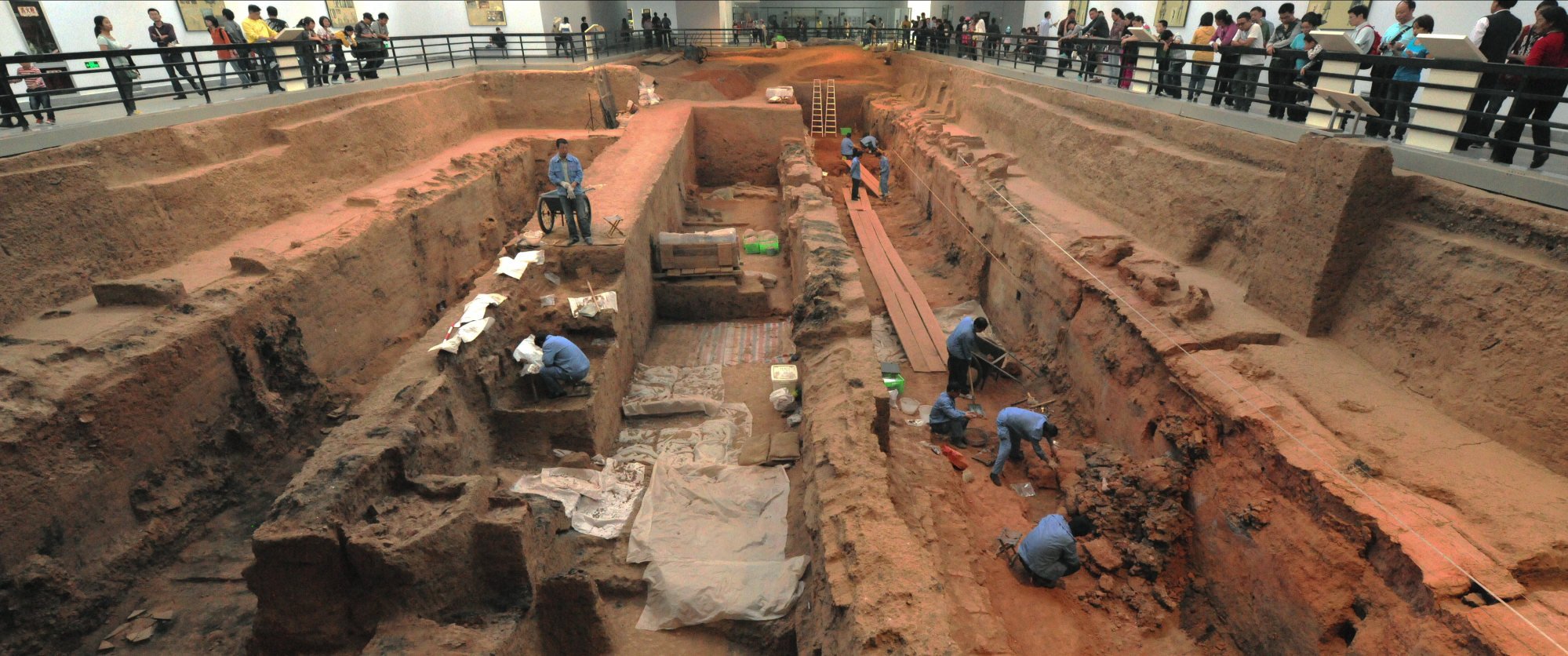Bronze chariots, water birds, weapons and ritual vessels, jade jewellery, and gold and silver trinkets were also unearthed in a sprawling mausoleum built to protect China’s first emperor, Qin Shi Huang, in the afterlife.

Mysteries of the Terracotta Warriors, a new Netflix documentary from British director James Tovell (Secrets of the Saqqara Tomb), explores the excavation efforts and the history behind the ancient tomb as well as the rise and fall of the Qin dynasty (221-207 BC) which Qin Shi Huang founded.
The film features Qin historian professor Lo Yuet Keung, who believes the sculptures’ hyperrealistic faces – each one is unique – are based on real people from all over China. He adds this was most likely the emperor’s idea, as unifying an empire with people of different ethnicities was a powerful symbol.
“If we did not have the first emperor it is possible that China would have continued to be divided among different states, much like divided Europe today,” Lo says.
Mysteries of the Terracotta Warriors, which is currently the second-most-watched movie on Netflix in Hong Kong, also shows how the mausoleum of Qin Shi Huang – the largest preserved site in China and a Unesco World Heritage site since 1987 – is like a giant crime scene, with archaeologists using forensic evidence to literally piece together the past.
The film, which blends period-drama-style re-enactments with documentary-style interviews, highlights the brutal treatment of the labour force behind the complex’s construction, which was made up of over 700,000 people, effectively prisoners of war, from conquered Chinese states.

It also seeks to uncover details about the real-life Qin warriors buried alongside the emperor, whose tomb remains sealed because of concerns that opening it could cause irreparable damage. There are also fears that the body could be booby trapped.
Qin historian Hui Ming Tak also features, sharing his thoughts on the epic burial site, “a 60 sq km [23 square mile] mausoleum complex which is equivalent to the size of Manhattan”.
“It is astonishing to think that this was built for one man,” Hui says.
Who was Emperor Qin Shi Huang?

Qin Shi Huang, who was born Prince Ying Zheng, overpowered the six remaining independent kingdoms during the late Warring States period with his massive armies, unifying China in 221 BC and ending centuries of political turmoil and bloodshed. The Qin dynasty lasted only 15 years, but China’s name is derived from it.
Despite these feats, the emperor has been portrayed as a tyrant who banned and burned books and executed scholars.

Why was the mausoleum built?
It took 38 years to build Qin Shi Huang’s mausoleum, the layout of which mirrors the urban plan of Xianyang, the Qin dynasty capital in modern-day Shaanxi province.
The complex, in the shadows of Lishan Mountain, has been named as one of the new seven wonders of the world.
It is believed he sent servants to find potions he believed would make him immortal. Ironically, drinking the “forever young” elixirs could have caused his premature death at 49, as some contained mercury, a poison.

